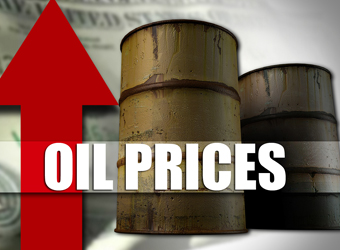Oil prices rose on Friday after the Saudi energy minister said OPEC would need to keep coordinating supply cuts with non-member countries including Russia into 2019.
Oil’s rise defied a slump in global stock markets, which fell in response to worries about a trade stand-off between the United States and China. Gold, seen as a safe haven, hit a two-week high.
Brent crude futures were at $70.4+ per barrel, up $1.55. U.S. West Texas Intermediate (WTI) crude futures settled at $65.88 a barrel, up 2.5 percent. Both Brent and WTI rose more than 5 percent for the week.
The weekly oil rig count rose by 4 to 804 in total, up 152 rigs from a year ago, Baker Hughes reported.
Since January 2017, the Organization of the Petroleum Exporting Countries as well as a group of non-OPEC countries led by Russia, have curbed output by 1.8 million barrels per day to counteract surging U.S. output.
Saudi Energy Minister Khalid al-Falih said OPEC members would need to continue coordinating with Russia and other non-OPEC oil-producing countries on supply curbs in 2019 to reduce global oil inventories.
OPEC officials have also said producers could look at a longer period than five years for developed-country oil stocks averages as a reference point.
“As the Saudi guessing game for the new rebalancing target begins, Brent seems well positioned to have another crack at the $70 (a barrel) level,” PVM said in a note.
Although analysts said the stand-off between the United States and China could hit oil markets, for now most said demand looked healthy.
“Geopolitical tensions are coming to the front. But global balances are relatively tight at the moment. That’s enough to amplify relatively small factors,” said Andrew Wilson, head of energy research at BRS Brokers.
Morgan Stanley also cited an expected pick-up in seasonal demand in the coming months.
“We are only three-four weeks away from peak refinery maintenance, after which crude and product demand should accelerate … Global inventories are already at the bottom end of the five-year range,” the U.S. bank said.
“There are sufficient reasons to expect oil prices to strengthen further from here, and we stick with our (Brent) $75 per barrel call for Q3,” Morgan Stanley said.
Goldman Sachs said in a note this week demand and OPEC cuts pushed their Brent spot price expectations to $82.50 a barrel by mid-year. Source: Reuters
Source: Reuters


